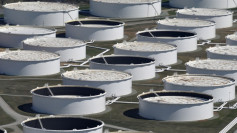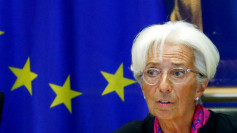It was a historic bloodbath on Wall Street Monday with all three top indices plumbing record lows. The Dow Jones Industrial Average plummeted 2,014 points, or 7.79%, its biggest single-day loss since October 2008. Before Monday, the biggest one-day loss for the Dow was 1,191 points on February 27.
The S&P 500 crashed as much as 8% on Monday -- its largest intraday drop since 2010 -- before closing 7.6% lower at 2,747 points. The NASDAQ Composite plummeted 7.3% to close 7,950 or 624.94 points lower.
Volume on the New York Stock Exchange amounted to 7.3 billion shares with 75 issues advancing (14 setting new highs) and 2,969 declining (1,615 setting new lows). Bank stocks took a nasty beating with JPMorgan, Citigroup, and Bank of America plunging more than 12%.
There will likely be an economic recession in the United States this year and the Monday Massacre on Wall Street will see to this.
"The collapse in yields and oil is signaling an imminent recession," said former hedge fund manager and TV host Jim Cramer. "I think we need to parse everything and remember that while most stocks aren't buyable, they will get to be that soon enough at this pace."
The negative open extended Wall Street's sell-off into its third week. Equities tanked for seven straight days to close out February as fears about COVID-19's economic consequences triggered the long-expected correction to lofty valuations that saw prices reach historic highs in early February.
Monday's unprecedented rout, however, was the immediate consequence of an oil price war unwisely triggered by Saudi Arabia to punish Russia for rejecting production cuts of 1.5 million barrels per day that would have steadied sagging oil prices. Added to the worsening COVID-19 situation in the U.S. and the Trump administration's bungled and the political response to it, the unwanted oil price war only served to inflame fears of already over anxious investors.
West Texas Intermediate (WTI) crude oil futures plunged more than 25% Friday after Russia and Saudi Arabia failed to agree on output cuts. On Saturday, Saudi Arabia launched huge discounts on its official selling prices for April delivery.
On Monday, oil prices plunged more than 20% in morning trading as the oil price war between Russia and Saudi Arabia sent prices toward two-decade lows. By midmorning, crude oil futures hovered around $33 a barrel while Brent crude was around $36. Analysts said prices haven't been this low since February 2002.
Overnight, U.S. oil prices plunged to as low as $27 per barrel. The lowest oil prices have fallen in recent memory was $17 a barrel in November 1998, the same level they as in 1946.
"The situation we are witnessing today seems to have no equal in oil market history," said Fatih Birol, executive director of the International Energy Agency, to Bloomberg. "A combination of a massive supply overhang and a significant demand shock at the same time."
"Crude has become a bigger problem for markets than the coronavirus," said Adam Crisafulli, founder of Vital Knowledge. "It will be virtually impossible for the (S&P 500) to sustainably bounce if Brent continues to crater."
The rout -- but not its record-breaking extent -- was foretold by futures contracts Sunday that pointed to a 1,700 point drop in the Dow Jones Industrial Average at the opening bell.
Only minutes after trading began Monday, the benchmark S&P 500 plunged 7%, triggering circuit breakers for the first time in history, which halted trading for 15 minutes. The plunge that hit the S&P 500, the Dow and the NASDAQ resumed with a vengeance when trading resumed. At one point, the Dow plunged more than 2,000 points -- the lowest in history.
Ironically, Wall Street's new worst day came on the same day as the 11th anniversary of the bull market run. Analysts said the market is now only 2% away from a bear market.






